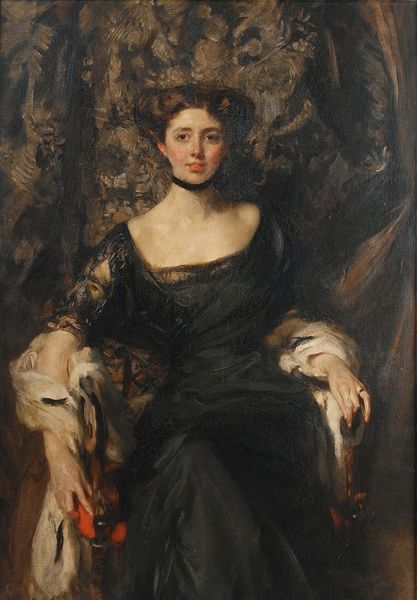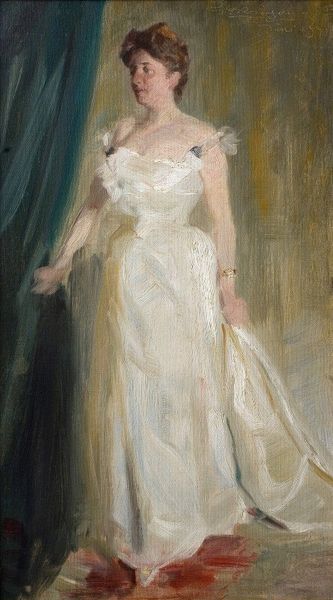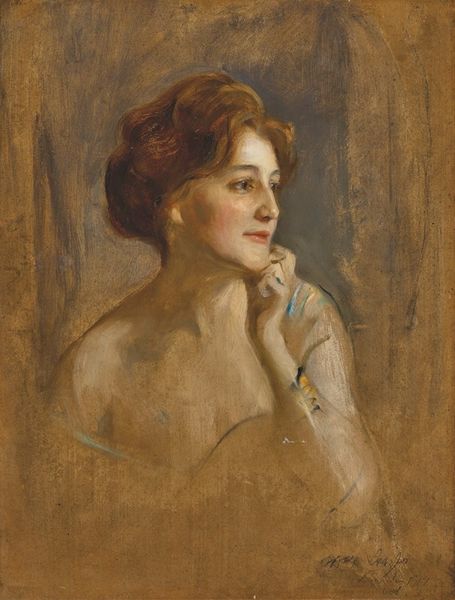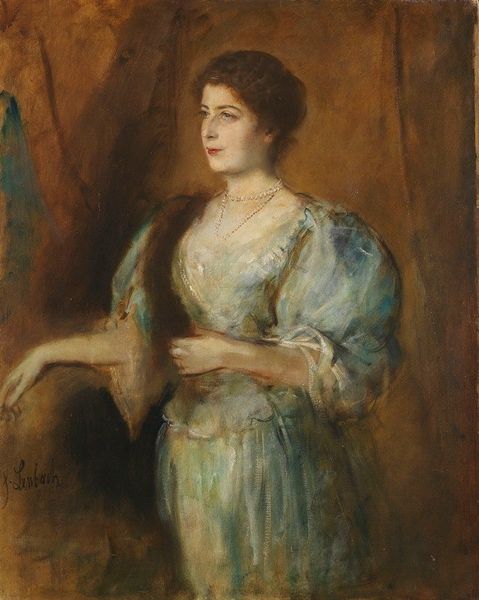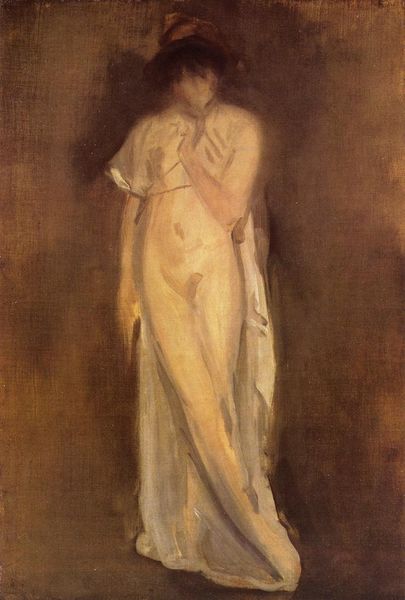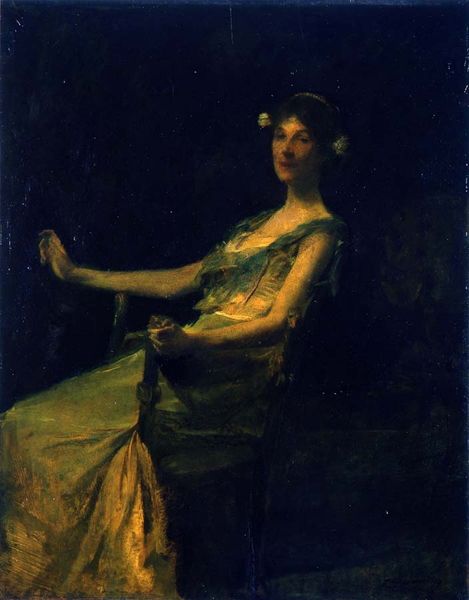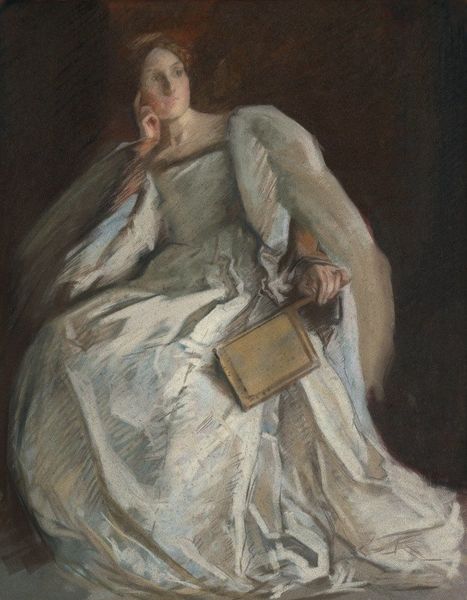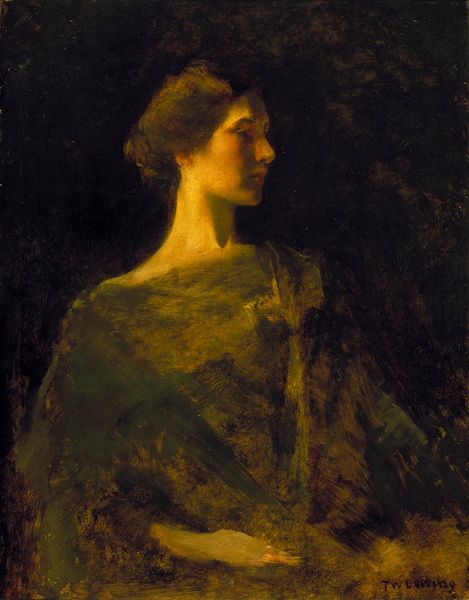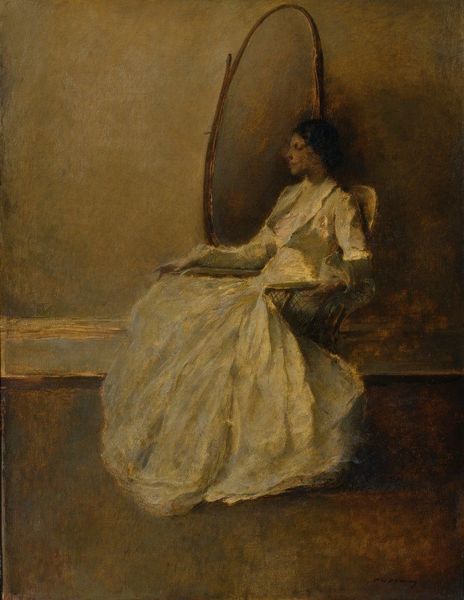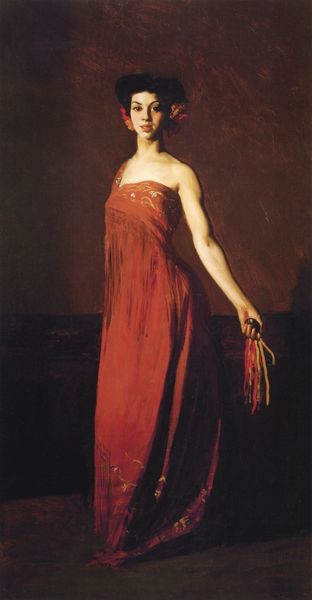
Copyright: Public Domain: Artvee
Editor: Alice Pike Barney painted this portrait of Evalina Palmer Sicilianos around 1911, using oil paint and an impasto technique. I’m struck by how the loose brushstrokes almost seem to obscure the sitter, and I wonder about the choice of materials in creating this ethereal, slightly melancholy effect. What catches your eye when you look at this portrait? Curator: Immediately, I’m drawn to the chair itself. Notice how prominently it’s featured, almost consuming the sitter. Its dark, ornate wood contrasts sharply with Evalina's pale dress. This isn’t just about displaying wealth; it speaks to the socio-economic context in which portraits like this were commissioned. Think about the labor involved in creating such a chair - the woodworker, the designer, the upholsterer if it had any fabric components. Barney’s rendering of this detail points us to the complex material conditions behind what might appear as a simple portrait of a woman. What kind of consumption practices is depicted here, for instance? Editor: I see what you mean. I hadn't considered the chair as anything more than a prop. But considering it represents labor and a specific social class adds another layer to understanding this artwork. Could the dress itself also point to such relations of production? Curator: Precisely. Observe how the dress flows and drapes but obscures as much as it reveals. It is only implied, not sharply articulated, suggesting it’s a representation of finery more than the object itself. Barney’s handling of the paint almost dissolves the boundaries between sitter, setting and accoutrements. So we have to consider what specific manufacturing and artistic skills were available for Alice Pike Barney in 1911, in creating this mood through paint. Also, can this handling of paint subvert or challenge traditional portraiture, by directing attention to its materiality, the artistic hand and the means of depicting status and subjectivity? Editor: This has changed my whole perspective! Looking at the portrait now, I see the artist really emphasized the materiality of not just the subject, but the artwork itself, and also subtly reveals social relations. Thank you! Curator: Indeed. Analyzing the materials and their method of production helps us move beyond simply admiring beauty to understanding the complex forces that shape art and society.
Comments
No comments
Be the first to comment and join the conversation on the ultimate creative platform.
